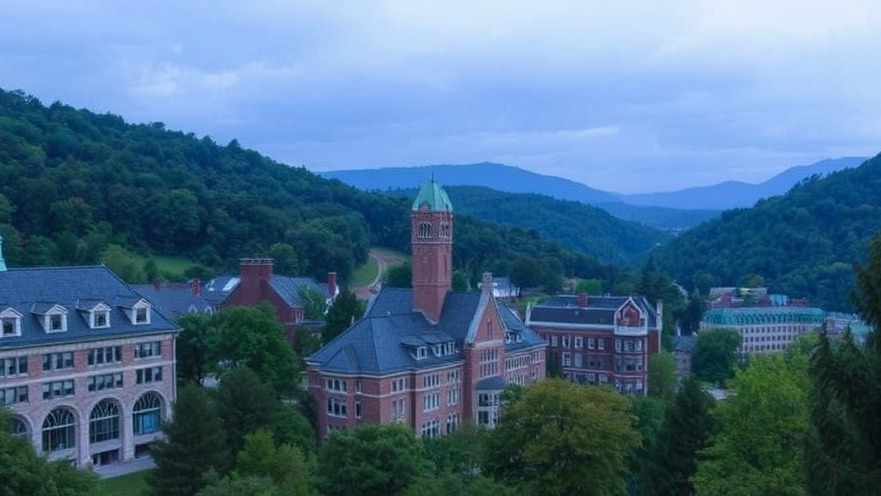
UNCA’s Stadium Proposal: A New Chapter for Asheville or an Urban Conflict?
On June 13, 2025, the University of North Carolina-Asheville (UNCA) confirmed a widely discussed rumor: the establishment of a soccer stadium on a 45-acre wooded area south of the main campus. This project, in collaboration with the amateur soccer club Asheville City SC, aims to create a multi-use stadium with a capacity of 5,000 seats, alongside retail markets and housing units, all projected to unfold within the coming decade.
Economic Impact: A Double-Edged Sword
With an estimated cost exceeding $200 million, the stadium project is positioned as a catalyst for economic revitalization in the region. However, the specific metrics and projections for job creation and tax revenues raised by UNCA remain vague. Chancellor Kimberly van Noort has asserted that the benefits would significantly boost the local economy, but community members are left questioning the authenticity of these claims.
“If the projected benefits are just numbers on paper, they don’t help our community,” noted Anna Lerner, a local activist focused on transparency in municipal projects. This sentiment emphasizes the need for clarity regarding financial implications and potential economic boons.
Environmental Concerns: A Significant Loss?
The proposed stadium site is nestled within what many residents regard as a critical urban forest. Local environmental advocates, like Chris Cotteta from the Five Points Neighborhood Association, have voiced fierce opposition, arguing that “this development represents not just the loss of trees but the erosion of community spirit and character.”
The threat to biodiversity and the natural environment poses a crucial question—can Asheville afford to sacrifice its green spaces for urban development? This juxtaposition of community welfare and urban expansion is at the heart of the ongoing dialogue surrounding the proposal.
Future of the Community: Beyond Soccer Matches
UNCA has touted the development as a necessary provision of housing, essential for accommodating students and faculty. However, the university has not committed to ensuring that this housing would be affordable, which raises concerns about displacement among local residents.
Moreover, the stadium's usage beyond college soccer games has yet to be articulated. Resident concerns about loud events, traffic, and commercial activities echo throughout community discussions. “What happens when a rock concert comes to town? Our peaceful neighborhood could turn into a noisy circus,” expressed local resident Leah Taylor.
Public Subsidies: A Controversial Aspect
As part of this venture, UNCA plans to seek $29 million in public subsidies, which many community members perceive as a contentious issue. “Why should taxpayer money help fund a private enterprise?” questioned Tom Wells, a longtime resident concerned about fiscal transparency. This objection reflects a broader sentiment among Ashevillians about using public resources for private gain.
Without definitive answers from the university about how it plans to secure such funding, residents are left feeling uncertain about their investment in a project that could reshape their neighborhood.
Your Voice Matters: Engaging with Local Governance
As the debate intensifies, it becomes evident that community engagement is vital. Residents are encouraged to participate in forums, town halls, and outreach events to voice their opinions directly to university officials. Advocacy can help shape the future of this project to ensure it aligns with the community's needs and values.
As Asheville evolves, the city stands at a crossroads between preserving its identity and embracing change. The discussions surrounding UNCA’s soccer stadium proposal are just a start—a glimpse into deeper conversations about urban development, economic vitality, and environmental sustainability that will shape the Asheville of tomorrow.
 Add Row
Add Row  Add
Add 



 Add Row
Add Row  Add
Add 

Write A Comment